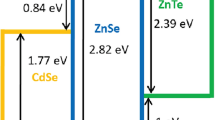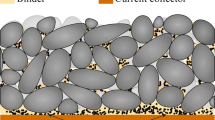Abstract
It is long known that for highly efficient ozone production in a dielectric barrier discharge (DBD), it is beneficial to add a small quantity of nitrogen to the oxygen feed gas. When operated in very pure oxygen without any significant nitrogen content, the ozone formation even drops to zero under certain operating conditions. This is known in the field as the “ozone zero phenomenon”, or OZP. The exact mechanisms of said effect, however, are still not understood and a subject of ongoing research. In the present work, we investigated the influence of different reactor surface materials, and their changes when exposed to plasma, on their influence on ozone formation under different nitrogen conditions. The metal powder deposited on the reactor surfaces by sputtering effects was found to have a buffering effect on the time scale needed for the OZP to fully develop. We conclude that the surface of the DBD reactor, in particular the available surface area for nitrogen compounds to adsorb to, is the crucial element in understanding the processes behind the OZP.
Graphical abstract

Similar content being viewed by others
References
J.C. Devins, J. Electrochem. Soc. 103, 460 (1956)
S. Yagi, M. Tanaka, J. Phys. D 12, 1509 (1979)
M. Taguchi, K. Yamashiro, T. Takano, H. Itoh, Plasma Processes Polym. 4, 719 (2007)
B. Eliasson, U. Kogelschatz, P. Baessler, J. Phys. B: At. Mol. Phys. 17, L797 (1984)
K. Murayama, N. Matsumura, M. Taguchi, Y. Katoh, K. Teranishi, S. Suzuki, H. Itoh, Eur. Phys. J. Appl. Phys. 47, 22814 (2009)
M. Taguchi, Y. Ochiai, R. Kawagoe, Y. Kato, K. Teranishi, S. Suzuki, H. Itoh, Eur. Phys. J. Appl. Phys. 55, 13805 (2011)
J. A. Souza-Corrêa, C. Oliveira, J. Amorim, Eur. Phys. J. Appl. Phys. 63, 11301 (2013)
R.A. Powell, S.M. Rossnagel, PVD for Microelectronics: Sputter Deposition Applied to Semiconductor Manufacturing. Thin Films (Academic Press, London 1999), Vol. 26, p. 29
Author information
Authors and Affiliations
Corresponding author
Rights and permissions
About this article
Cite this article
Seyrling, S., Müller, M. & Ramoino, L. Influence of reactor surface materials on the ozone zero phenomenon. Eur. Phys. J. D 71, 136 (2017). https://doi.org/10.1140/epjd/e2017-70246-4
Received:
Revised:
Published:
DOI: https://doi.org/10.1140/epjd/e2017-70246-4




